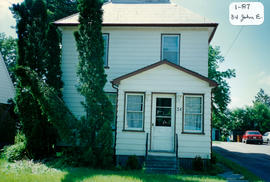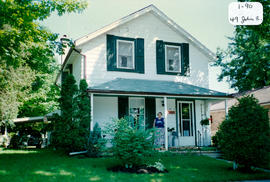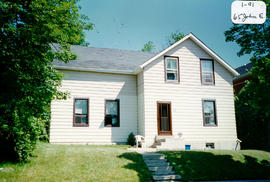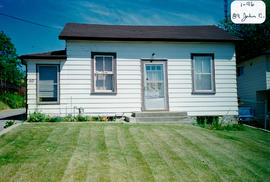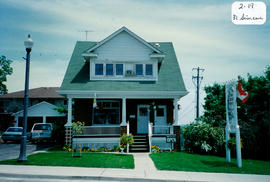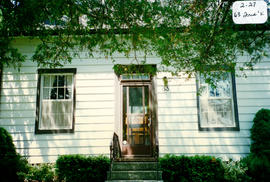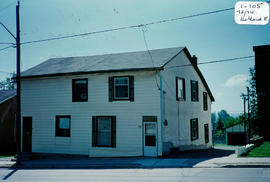- CA BWGPL GJ-HB-2017-04-04-07
- Item
- 1996
Part of George Jackson fonds
The house located mid-block at 34 John St. East was built in the Ontario Vernacular style around 1850 in Amsterdam (on the east side of the Holland River). It was moved to its current site in Bradford around 1890 by Sam Lukes to provide housing for the staff of his flour mill. His mill was in its heyday at the turn of the century (1890-1910). McClary (a high school teacher) once lived here. Bert and Margaret Hunt raised their children (Phyllis, Art, Oscar, George and Lorna) here. Bob Veale, a WWI veteran and banker, lived here after WWII until his death.
The two-storey, two-bay house has a rectangular plan with a side hall, an asymmetrical façade, and a medium-pitched, hipped ‘Pedlar’ metal roof. An enclosed, entrance porch with a shallow, gable roof was added after the house was moved to Bradford. It is raised slightly above grade and has a single door and windows on three sides. The house has small window openings and double-hung windows (not original) with plain, wood trim and sills. Wood frame construction is covered with horizontal metal siding and there is a parged, stone foundation. The original cladding was probably wood cove siding. According to the 2000 inventory, the house likely had few decorative details originally. It also notes that other than the building’s form, few existing building elements appear to be original (1, 2, 3)
George Jackson

